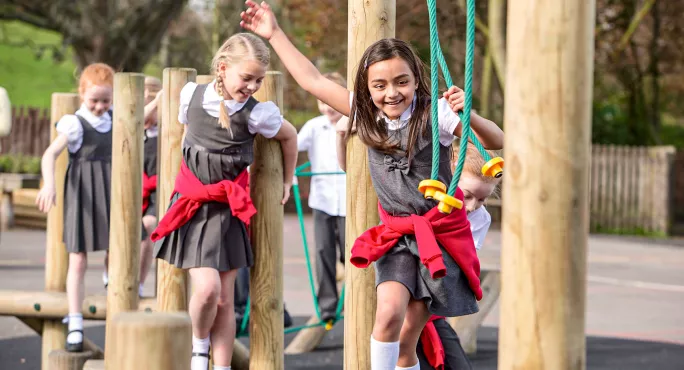Let’s make more time for play in the school day

It was very welcome to hear the education secretary setting out her positive ambitions for schools last week, including stressing the importance of children’s wellbeing.
Part of that drive to boost wellbeing should include re-examining the time and opportunities we give children to play in school.
Some of the happiest times I spent at school were the hours spent with friends in the playground - playing, socialising, building new worlds of adventure.
Loss of play time
Playtime was a vital part not just of the school day but of growing up. As well as being good fun, break provides opportunities to explore new skills, discover and hone talents and interests, learn teamplay, form friendships and to work out how to resolve disputes.
We launched our year-long Raising the Nation Play Commission - chaired by Paul Lindley, founder of the country’s biggest baby food brand, Ella’s Kitchen - to put the importance of play to children’s learning and development back on politicians’ agendas.
Yet it is more than 15 years since a government has had a national play strategy, an era before the smartphone and social media. Experts tell us that the time children are allowed to play in school is being steadily squeezed.
Specifically, research has shown:
- In 1995, key stage 1 children had an average of 94 minutes a day for breaktime. That fell to 85 minutes by 2017.
- At KS2, children had 83 minutes breaktime in 1995, falling to 75 minutes in 2017.
- Meanwhile, at KS3 and KS4, their 74 minutes’ breaktime in 1995 fell to 63 minutes by 2017.
The need to play
Add that all up across a school year and children are losing months of playtime during their school lives.
Recently, we spoke with groups of Year 6 students about play. They talked about how they struggled to complete sedentary tasks for one or two hours at a time, but also how they found their movement breaks a necessary rest from concentrating in class.
They also complained about breaktime sometimes being withdrawn as a punishment, which they felt did not help them with their learning.
Indeed, surveys show teachers often cite behavioural issues in the classroom as a reason for reducing playtime, as well as a tool to tackle instances of bullying.
Teachers in primary school are more likely to recognise the importance of breaktime for letting off steam, playing and being creative. Secondary school teachers are more likely to see break as a time for eating. This may explain why breaktimes in many secondary schools have been reduced.
Pressure building
The increased emphasis on a packed “knowledge-rich curriculum”, with more pressure on teachers to tick boxes and deliver a narrow set of outcomes, has also led to breaktime becoming deprioritised.
We have heard in our evidence sessions how play is often not seen as a tool for learning and how teachers can be discouraged from bringing play into the classroom.
At the same time, many children, particularly those living in deprived families and communities, are finding less time to play at home or in other spaces such as after-school clubs.
Even 10 years ago, just 36 per cent of children played with their friends outside of school once every two weeks or less. In comparison, 80 per cent of their parents say they saw their friends at least a few times a week when they were children.
This can’t be healthy for our children. High levels of child obesity and worsening children’s mental health make it more important than ever that we support children to play more.
It seems counterproductive to have moved to an education system that offers less time for children to play.
Time to play
The curriculum and assessment review offers an opportunity to begin to acknowledge the importance of play to children’s learning and development.
The Welsh curriculum already includes a commitment to maintaining time for children to play, recognising its central role in creating an effective learning environment.
It describes play as a “fundamental right for all learners” and lists play-based learning and time outdoors as key features of successful pedagogy.
Where schools are embracing play, there are many great benefits to be had. The growth in some primary schools of Outdoor Play and Learning (Opal), a mentor-supported programme, is having a transformational effect, improving behaviour in schools and children’s confidence.
Of course, there are many reasons beyond a reduction in school playtime for children spending less time playing, from a lack of safe spaces, to more street traffic and increasing amounts of time spent on digital devices. But we shouldn’t just accept that this is the way it will always be.
We need to reprioritise the role of play in our children’s lives - both inside school and outside - so we can provide today’s children with the benefits and boost to wellbeing we experienced as children ourselves.
That should start with giving children back their playtimes.
Anne Longfield OBE is chair of the Commission on Young Lives and a former children’s commissioner for England
For the latest education news and analysis delivered every weekday morning, sign up for the Tes Daily newsletter
Keep reading for just £1 per month
You've reached your limit of free articles this month. Subscribe for £1 per month for three months and get:
- Unlimited access to all Tes magazine content
- Exclusive subscriber-only stories
- Award-winning email newsletters
topics in this article



